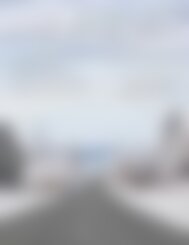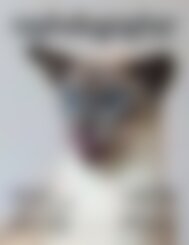NZPhotographer Issue 21, July 2019
As of December 2022, NZPhotographer magazine is only available when you purchase an annual or monthly subscription via the NZP website. Find out more: www.nzphotographer.nz
As of December 2022, NZPhotographer magazine is only available when you purchase an annual or monthly subscription via the NZP website. Find out more: www.nzphotographer.nz
You also want an ePaper? Increase the reach of your titles
YUMPU automatically turns print PDFs into web optimized ePapers that Google loves.
WHAT ARE YOU SHOOTING WITH?<br />
I currently have 2X Canon 30D and 1X Canon Rebel<br />
but I plan to replace both of the 30D's as soon as<br />
Canon release their new range. They have been<br />
reliable but have done their time.<br />
My lenses include the Canon 50mm, Canon 17–85mm,<br />
Sigma 70–300mm, and a Tamron 150–600mm. I have<br />
plans to add a Canon 70–200 to the future kit. I also<br />
have a Manfrotto tripod and various studio equipment.<br />
TELL US ABOUT THIS PHOTO<br />
We stayed at Bayete lodge within the Manyoni<br />
private game reserve in the Mkuze area of Kwa Zulu<br />
Natal. Manyoni is not only a game reserve but also<br />
specialises in conservation and re-introduction of<br />
endangered species (Black Rhino, Wild Dog and<br />
Cheetah). There are a few lodges within the reserve<br />
focusing on giving visitors the wildlife experience.<br />
The best time for wildlife photography at game<br />
reserves is before sunrise or late afternoon as this is<br />
the time that animals are either going down to rivers<br />
for water or feeding/hunting so it was during an early<br />
morning game drive (the sun had just come up) in the<br />
Manyoni Game Reserve, that we came across this<br />
Black Backed Jackal sitting in a pile of old rhino dung<br />
on the side of the road.<br />
Initially we stopped about 50m away and took photos<br />
but as the jackal seemed relaxed, we decided to<br />
slowly creep up to see how close we could get for<br />
better shots. We were able to get alongside on the<br />
opposite side of the road which is where this photo<br />
was taken. This is unusual behaviour, because if you<br />
approach jackals (or any wildlife) they will normally<br />
run a short but safe distance away.<br />
We were able to spend about 5 minutes taking photos<br />
until the jackal decided that it had other things to do!<br />
WHAT WAS HAPPENING BEHIND THE CAMERA<br />
THAT WE CAN'T SEE?<br />
We were about 8 people in the vehicle, including the<br />
game ranger, all of us having cameras. In order for<br />
photos to be taken this close up, there cannot be any<br />
noise (even talking is done in a quiet whisper) nor any<br />
sudden movements as it will scare the jackal away. It<br />
may looked and act relaxed but its daily life depends<br />
on being alert – It was continually looking at us and<br />
the surrounding area for any danger.<br />
WHAT CAN YOU TELL US ABOUT THE JACKAL?<br />
The jackal is a very cunning animal that is related to<br />
wolves and dogs. They are generally found in pairs,<br />
but can also live solitary lives. They hunt small animals<br />
and birds, but where large predators live (lion, leopard<br />
etc.) they will salvage from these animals.<br />
IS THIS YOUR FAVOURITE SHOT FROM YOUR TRIP?<br />
The simple answer is probably no. Not because I don’t<br />
love the shot, but because it’s difficult to pick a favourite.<br />
BEHIND THE SHOT IS PROUDLY<br />
SUPPORTED BY<br />
Photos reflect memories of where I was at the time the<br />
picture was taken and what it took to capture it. For<br />
example, the time we sat in a vehicle for four hours in<br />
36° heat and 90% humidity, waiting for exactly the right<br />
shot of a leopard (published in NZP issue’s 2 & 20). Or<br />
the series of photos of an impala antelope that had<br />
just given birth. Or waiting patiently for the bright green<br />
chameleon to cross the road in front of our vehicle,<br />
until it climbed safely into the trees (NZP issue 2). And<br />
the side-striped jackal which I have only ever been<br />
able to photograph on one occasion. Photos that may<br />
never be repeated or seen again.<br />
So when I look at my photos, these memories flood<br />
back and fan my desire to create even more.<br />
WHAT WILDLIFE PHOTOGRAPHY TIPS CAN YOU<br />
SHARE WITH US?<br />
For a wildlife photographer to consistently take good<br />
photos, I think these 3 things will help:<br />
1. You need to know your subject or be with<br />
someone that can help and guide you with<br />
information.<br />
2. Have a plan – Decide what it is you are going<br />
to photograph and what type of photo you<br />
are looking for. With wildlife it is so easy to get<br />
distracted and go off on a tangent. Be prepared<br />
to 'hunt' for your subject and once you find it,<br />
spend as much time as possible photographing it.<br />
This may take months or even years.<br />
3. Have patience, lots and lots of patience, and then<br />
you may get your shot.<br />
I always encourage others to join groups and/or clubs,<br />
in this way you will pick up valuable knowledge from<br />
those who have the same interest as you never stop<br />
learning and improving as a photographer – I myself<br />
am always looking to improve and learn from others.<br />
WHERE CAN WE FIND YOU ONLINE?<br />
www.gazza.photography<br />
www.facebook.com/gary.reid.3705<br />
albums.excio.io/profile/Gazza


















